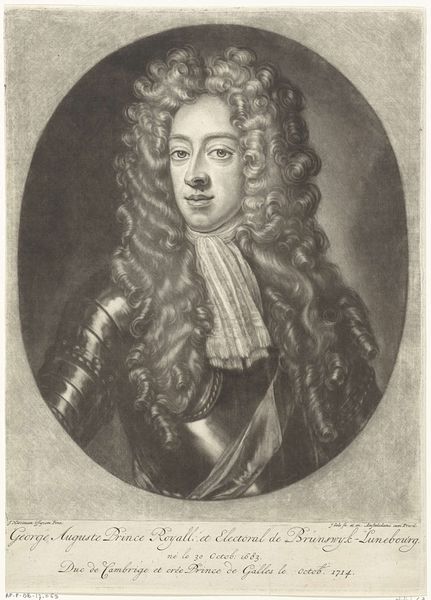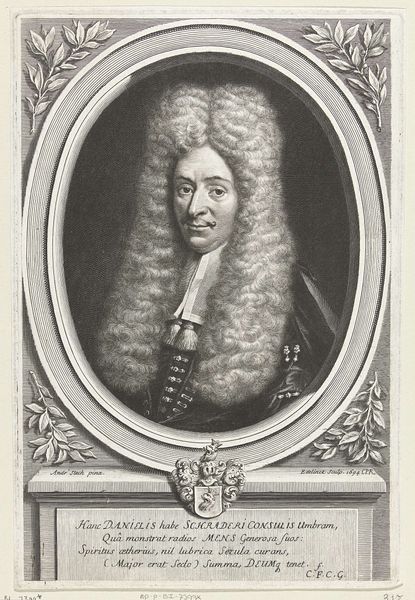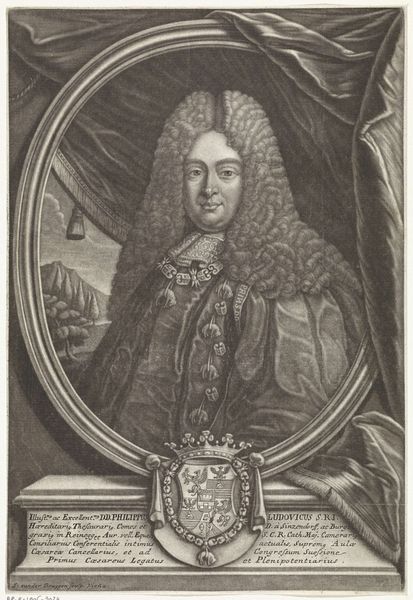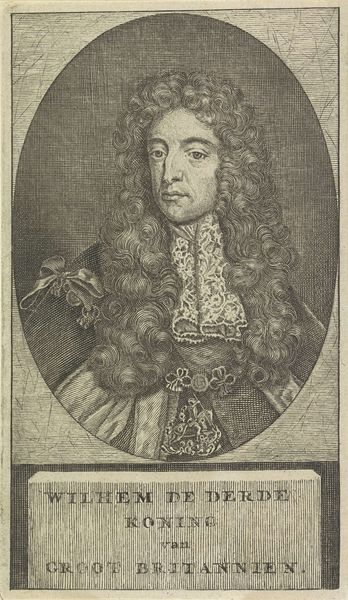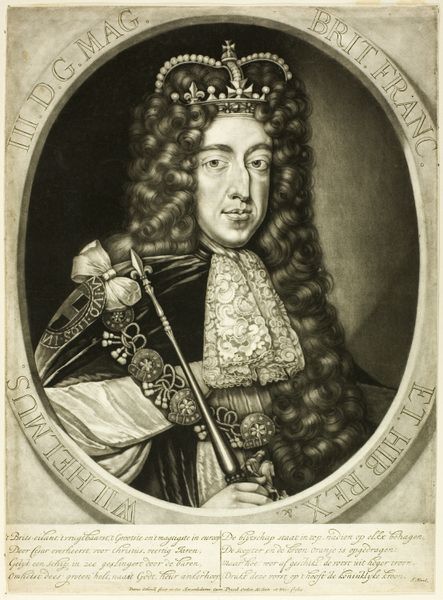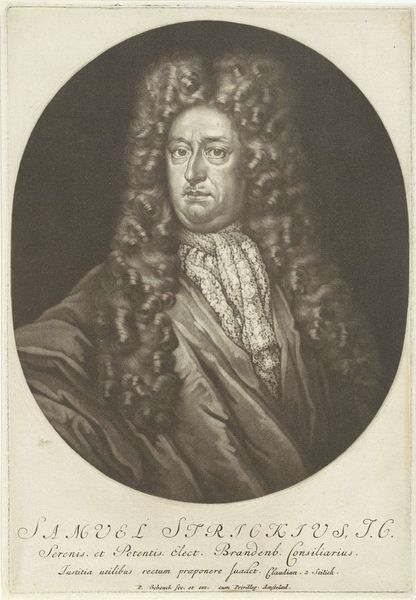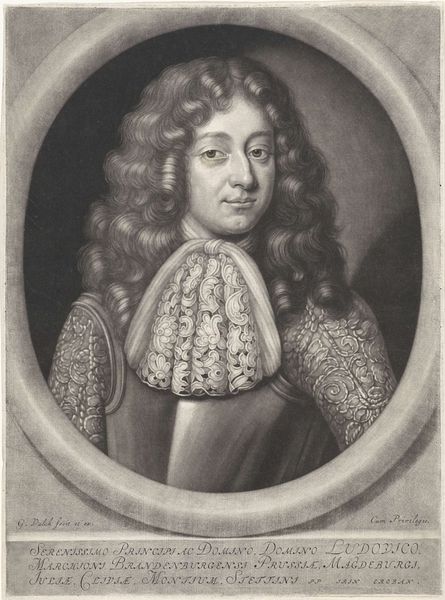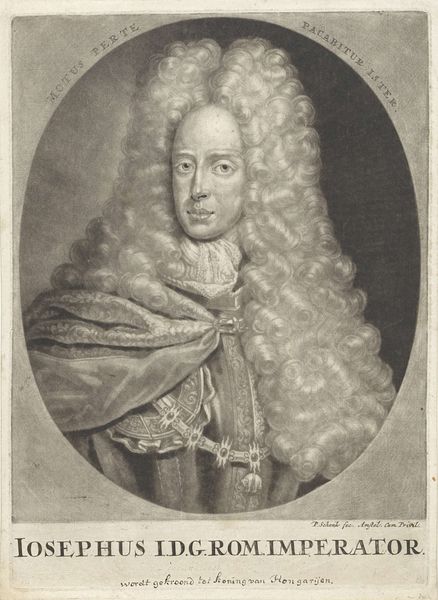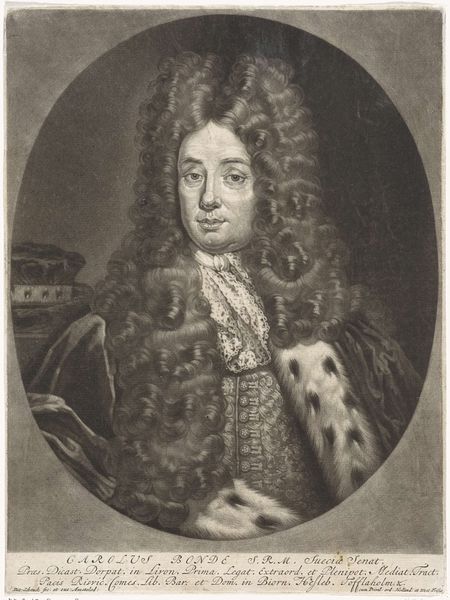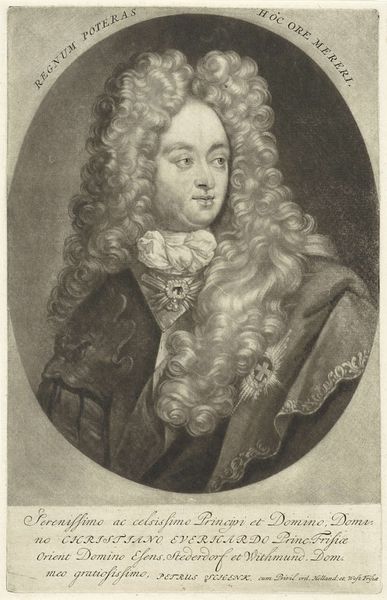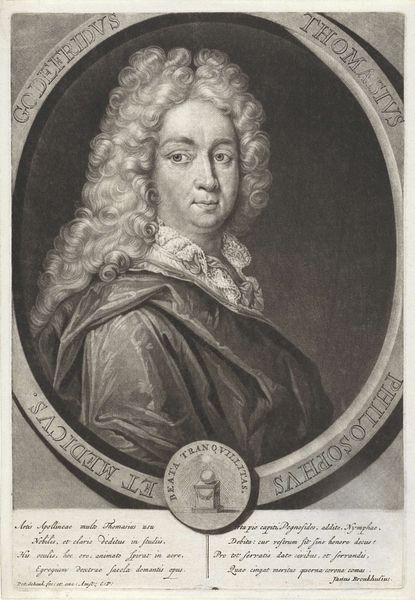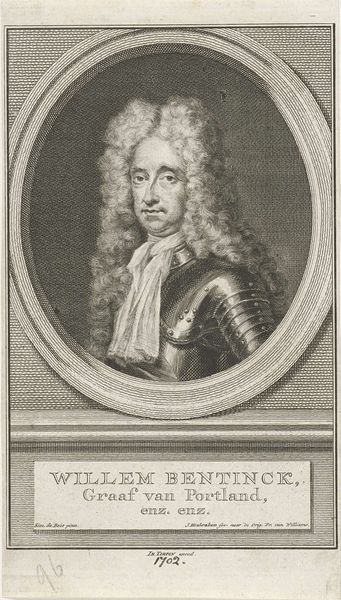
engraving
#
portrait
#
vintage
#
baroque
#
charcoal drawing
#
charcoal art
#
historical photography
#
history-painting
#
engraving
Dimensions: height 268 mm, width 185 mm
Copyright: Rijks Museum: Open Domain
Curator: Here we have a rather imposing engraving of Charles VI, Holy Roman Emperor, crafted sometime between 1670 and 1711 by Pieter Schenk. The Rijksmuseum is fortunate to hold this piece within its collection. Editor: The first thing that strikes me is the contrast; it feels muted, almost solemn. Even with all the regal symbols present, there’s a subdued quality to the image. The oval frame reinforces that sense of constraint, doesn't it? Curator: Absolutely. This was a deliberate stylistic choice in Baroque portraiture, intended to emphasize status and power, framing it, if you will, within established structures. Consider the setting. Portraits like this weren't simply aesthetic exercises, but visual assertions of the subject's right to rule, presented in a very specific way. Editor: I’m thinking about that assertion of power. There's the crown beside him, practically within reach, yet the gaze feels almost… vulnerable? The Latin inscription "Parcere Subjectis et Debellare Superbos" translates to "To spare the conquered and subdue the proud." What a maxim. Was this about softening the image of empire, or justifying harsh realities? Curator: Both, probably. Remember, the Habsburgs had to constantly negotiate their authority, particularly in the wake of religious wars. Images became powerful propaganda tools, projecting ideals of enlightened rule while simultaneously reinforcing hierarchies. The chain, the sword…they’re all elements contributing to a controlled narrative. Editor: And who controlled that narrative? Pieter Schenk was the artist, but how much creative agency did he truly have in shaping Charles VI’s image? Was this portraiture as collaboration or coercion? Curator: Precisely. Consider Schenk’s role as a printmaker as well. Engravings like this allowed for wider distribution. Royal imagery permeated society; therefore, its messaging did as well. The portrait normalizes this structure. Editor: So, this isn't just a snapshot of an Emperor; it's a carefully constructed instrument of power. And through that very artifice, the complexities and contradictions of empire come into focus. Curator: It’s fascinating how visual imagery of the era invites us to examine those systems critically, from the role of patronage to questions of authority. Editor: Exactly. There is real engagement in excavating those pasts, questioning whose stories get amplified. It really challenges one's ideas of power, doesn’t it?
Comments
No comments
Be the first to comment and join the conversation on the ultimate creative platform.
